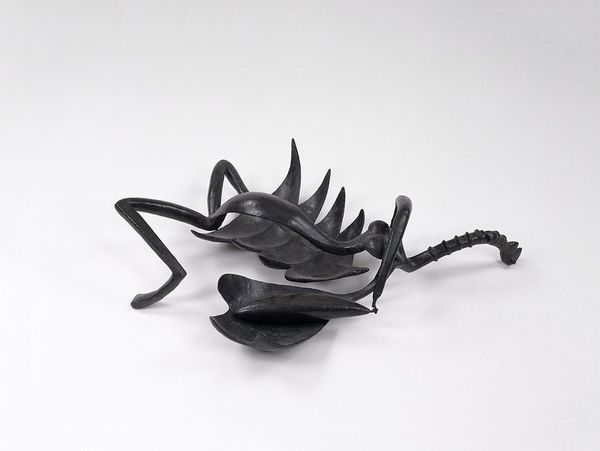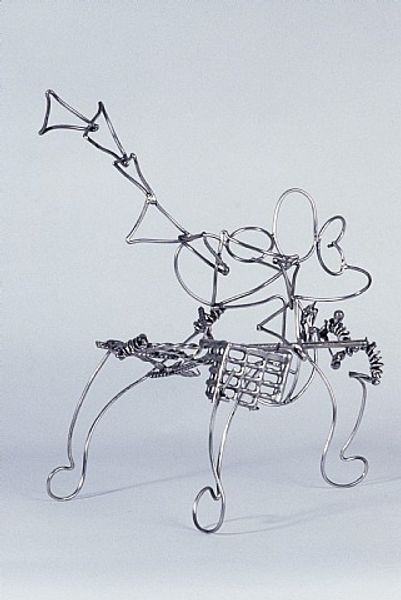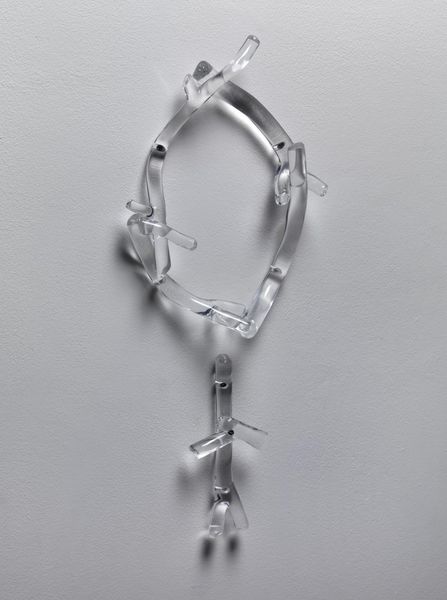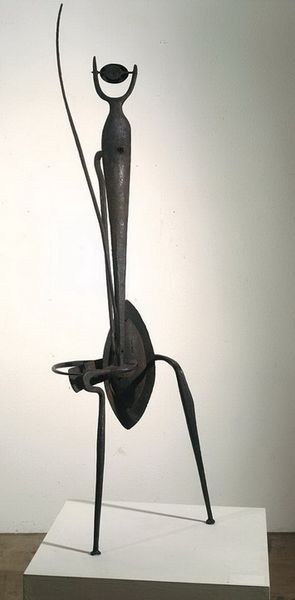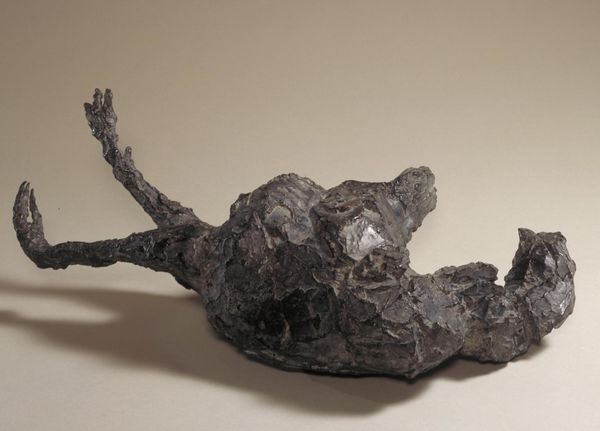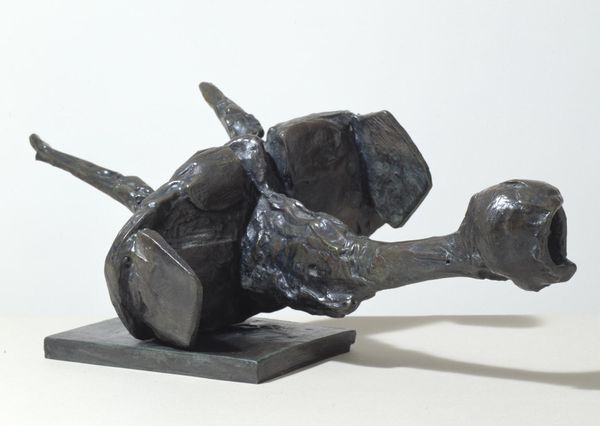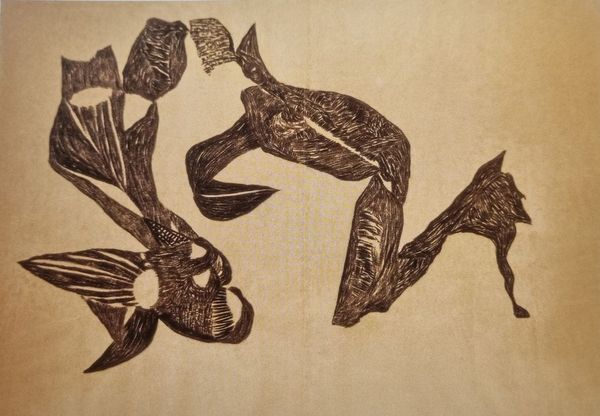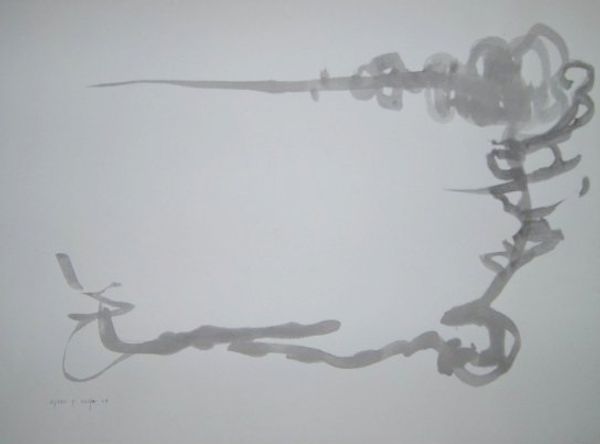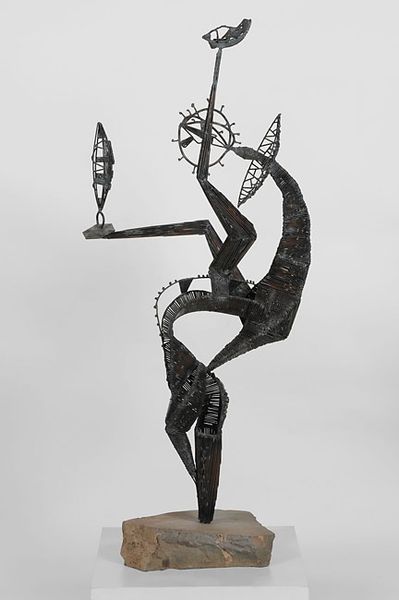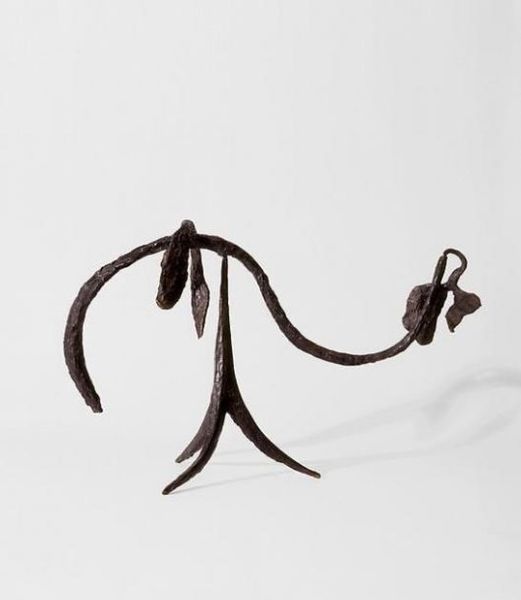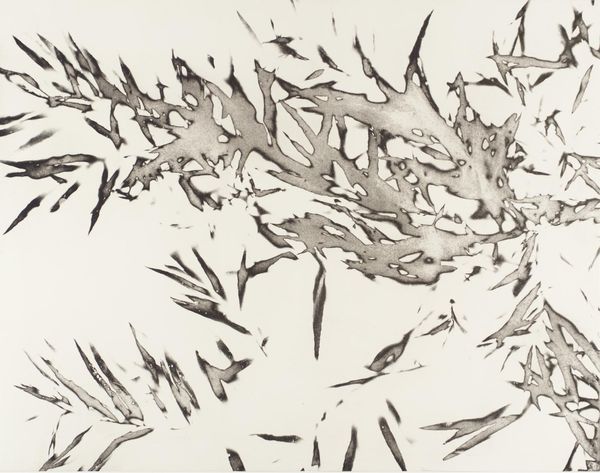
Dimensions: 760x 2008x 320mm
Copyright: © Bryan Kneale | CC-BY-NC-ND 4.0 DEED, Photo: Tate
Editor: So this is Bryan Kneale’s “Journal,” a painted aluminum piece. I’m really struck by its sense of movement and how it almost seems to dance across the wall, despite being a solid form. What do you make of it? Curator: It does dance, doesn't it? Like notes escaping a musical score or thoughts spilling from a daydream. Kneale often played with the tension between line and volume. The aluminum, so seemingly weightless, takes on this graceful, almost calligraphic quality. Do you think that contrasts with the feeling of solid metal? Editor: Absolutely, that contrast is unexpected! I hadn’t considered the calligraphic angle either, but now that you mention it, it really clicks, especially given the title. Curator: It’s a reminder that even the most rigid materials can express fluidity and feeling, much like our own interior landscapes. I find that hopeful, don't you? Editor: I do. Thanks, I will never look at metal the same way again.
Comments
Join the conversation
Join millions of artists and users on Artera today and experience the ultimate creative platform.
tate 7 months ago
⋮
Bryan Kneale was born on the Isle of Man and attended Douglas School of Art (1946-47) and the Royal Academy Schools, London (1948-1949). Kneale was initially a figurative painter, but started making sculpture after attending a welding course in 1960. One of the main characteristics of Kneale's sculpture is its emphasis on the way separate forms are joined together. Many of his works have a delicate, linear quality and the critic Hilary Spurling described them as 'line drawings in space.' (Spurling, p.4.) Kneale works directly with metal and in an unpublished Tate interview he described his sculpture as 'three-dimensional drawing.' Since the mid-1980s Kneale's major source of inspiration has been the skeletons and joints of animals he studied and drew at the Natural History Museum in London. In an unpublished Tate interview he related his fascination to a sculptural interest in structure and form: 'I have always found in all my work it is the connections, the articulation of form which has been of particular importance to me, rather than the development of sculptural mass. The endless invention in nature of bony structures from minute tiny insects and animals to colossal forms of dinosaur bones … has always fascinated me.' Kneale's sculpture of the 1990s has alternated between works based on animal structures and others which are abstract. Kneale works with spun steel and domes of aluminium which he cuts up and realigns to create a wide range of soft, curvaceous wall and floor based pieces which are then burnished, painted or patinated. Journal consists of a series of rounded, spiralling aluminium forms painted with grey cellulose paint. It is made up of two units displayed as a single entity and the interconnected, lace-like elements are welded together. The larger section on the left consists of twisting, almost flayed forms through which the wall is visible. The smaller section on the right suggests a tail and is made of a single thin shaft of aluminium with a broken, circular form at the end. Journal is just over two metres long and hangs horizontally on the wall at about head height. Its spindly, pale calligraphic forms are reminiscent of shattered skeletal remains washed up on a beach. The work was first shown at Kneale's 70th birthday show at Roche Court, Wiltshire in August 2000. Further Reading:John Spurling and David Attenborough, Bryan Kneale: Bone Drawings, exhibition catalogue, Royal Academy of Arts Friends Room, London 1988Bryan Robertson, Bryan Kneale: Sculpture. Work In Progress, exhibition catalogue, Serpentine Gallery, London 1978Hilary Spurling, Bryan Kneale: Small Sculpture and Maquettes, exhibition catalogue, Taranman Gallery, London 1977 Judith CollinsNovember 2000Revised by Imogen Cornwall-Jones January 2002
